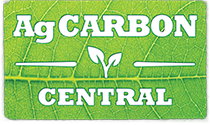In this contributed article Marg Will says the agricultural industry needs to prepare for climate-related trade barriers and reduce its carbon footprint. Marg is CEO of Organic Systems & Solutions and sits on the standards board of Certified Sustainable, a not-for-profit standards body that helps growers, makers, and providers validate and verify their sustainable practices and outcomes.
AUSTRALIAN farmers must prepare to transparently account for their carbon emissions or risk a significant reduction in their potential export markets.
The European Union’s (EU) provisional agreement to a Carbon Border Adjustment Mechanism, announced in December 2022, is a signal that other markets are likely to start including carbon measurement requirements for their imports in the future.
Almost 85 percent of Australia’s 2021 exports went to countries that have set net-zero emissions targets. To meet these targets, they will soon need to start measuring the carbon emissions that come from direct imports, as well as those within the supply chain of manufactured goods.
This means any product exported from Australia that is used alone or as a component in a manufacturing process – including food manufacturing – is likely to require a reliable and transparent carbon measurement.
Farmers need to start factoring this into their business planning by finding ways to reliably measure their footprint.
The Carbon Border Adjustment Mechanism, or CBAM for short, is an EU measure that will impose a levy on imports of carbon-intensive goods. It will eventually require all goods imported into the EU to fulfil the climate standards that apply in all 27 member states.
Agriculture is not yet included in any proposed climate-focused trade mechanisms, but it is only a matter of time before it is
The phased implementation of CBAM will begin in October 2023, initially targeting hard-to-abate sectors such as cement, iron and steel, aluminium and fertilisers. While the EU has not included agriculture in the initial list of imports subject to the mechanism, the list is due to be reviewed in 2026. Agriculture is likely to be added then, giving Aussie farmers a few short years to begin accounting for their carbon emissions.
CBAM is also expected to eventually cover all scope three emissions, which are indirect emissions that occur through a company’s value chain. This means that Australian growers and processors which supply European manufacturers may also get caught in CBAM’s net.
Trade is emerging as a hotly contested topic in the global race to NetZero. Australian farmers cannot be complacent. Agriculture is not yet included in any proposed climate-focused trade mechanisms, but it is only a matter of time before it is.
Growers must use this time to put the right tools in place to meet these rapidly evolving export market requirements.
Many forward-thinking agricultural companies are already taking steps to ensure they have the data and measurements needed for when such policies become mainstream.
One Certified Sustainable mixed sheep and cropping family-run enterprise in Western Australia, for example, employs both conventional and alternative agricultural practices. In doing so, it is able to maintain its yields and profits while reducing its nitrogen use to just 20pc of the district’s average.
When measured as part of a study with The University of Queensland, this family farm was found to be emitting 6.56 kg of carbon per tonne of grain. By comparison, a fully conventional WA grower was emitting 43.4 kilograms.
It may take a time to adapt and learn, but Aussie farmers need to start reducing their carbon footprint and determining ways to prove that authentically, or their export markets may be at risk in the future.
Given the supply chain implications, processors who use Australian agricultural inputs in their supply chain for export goods also need to start considering how they are likely to be able to measure their ingredients’ carbon footprint.
Standards such as Certified Sustainable, which independently verifies growers’ and processors’ ESG performance, don’t just help accredited farmers understand and measure their carbon emissions. They also help the processors who use the goods as inputs and work with them to find ways to reduce their own processing emissions.
Certified Sustainable is now itself certified by an independent board from Deakin University. This adds an additional layer of accountability that will ensure anyone that is Certified Sustainable can reliably prove their carbon status to their end-buyers and see the impact that small adjustments in their farming approaches can make.
Previous opinion articles on carbon
- Opinion: carbon trading – best scheme to lose your farm on since the 80’s offshore debt debacle
- Opinion: the big part of the safeguard mechanism attracting little attention

